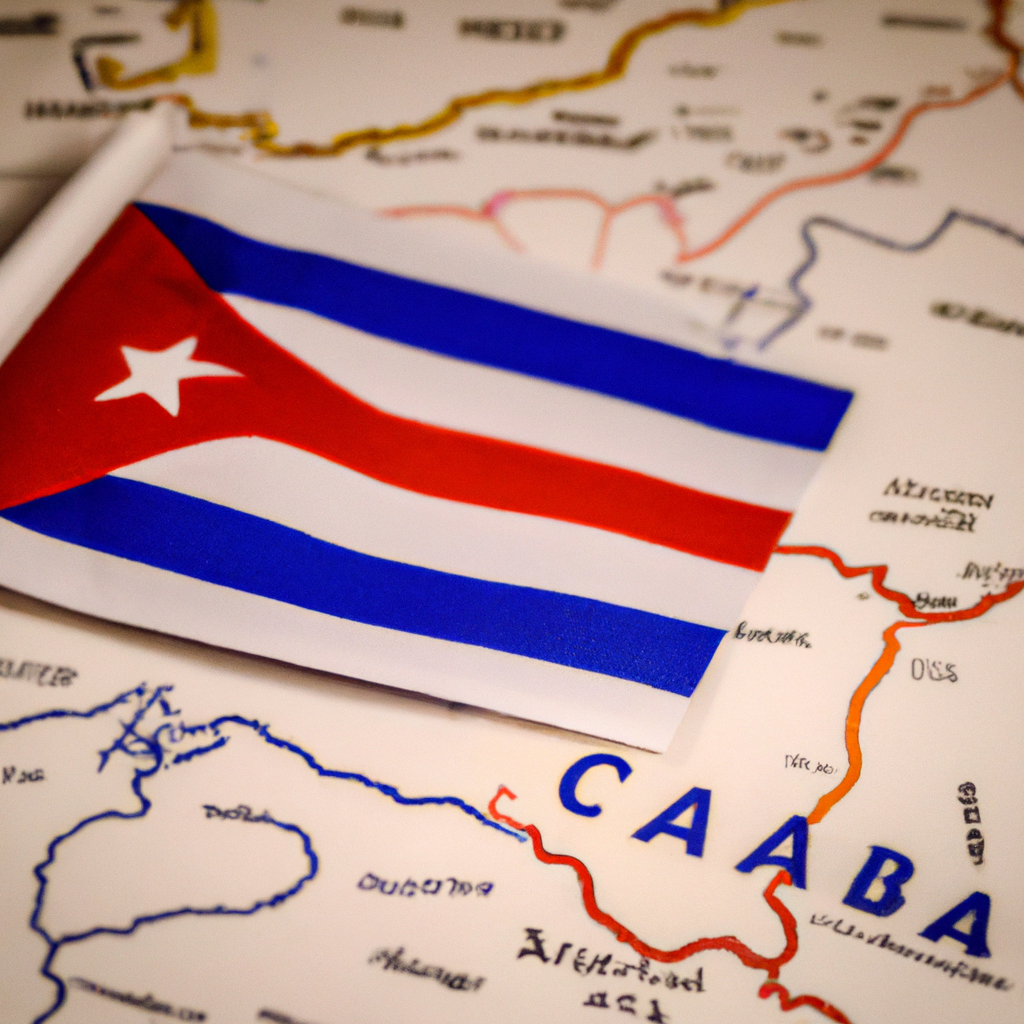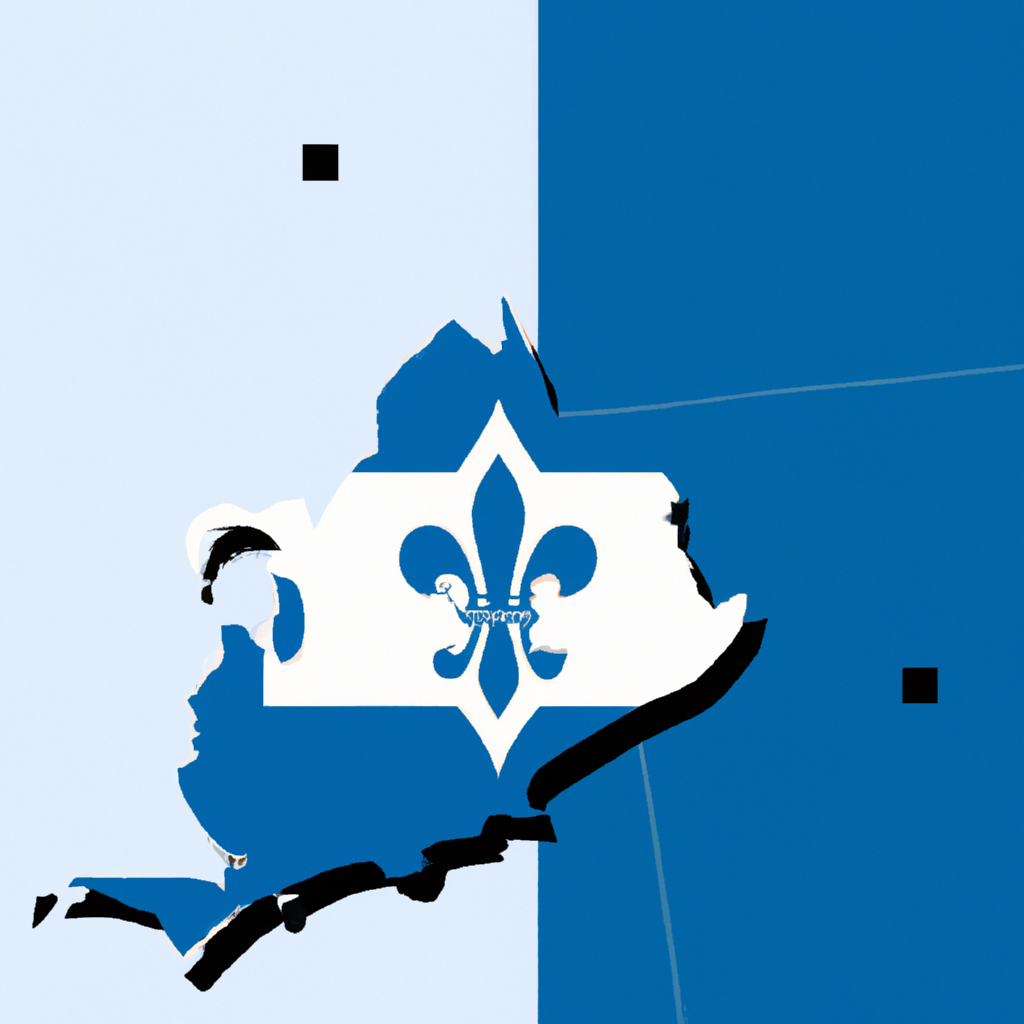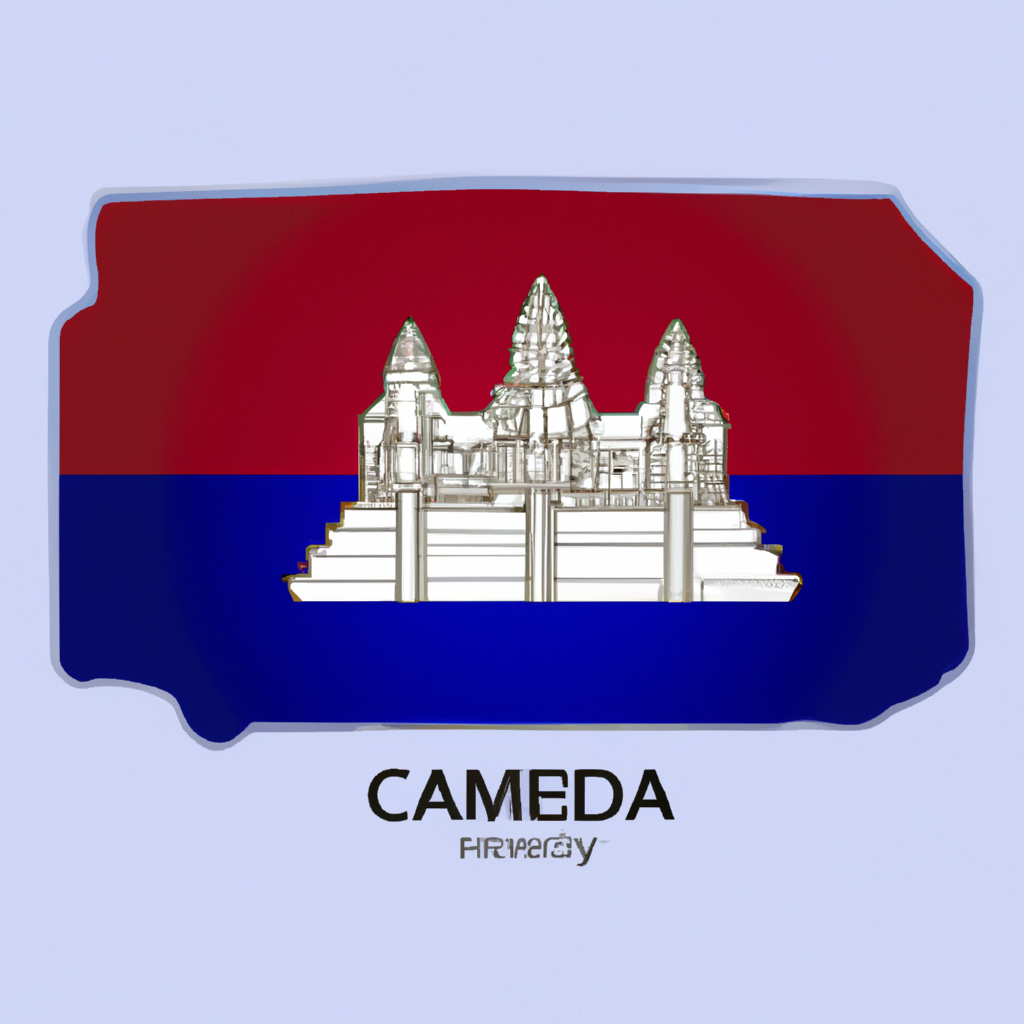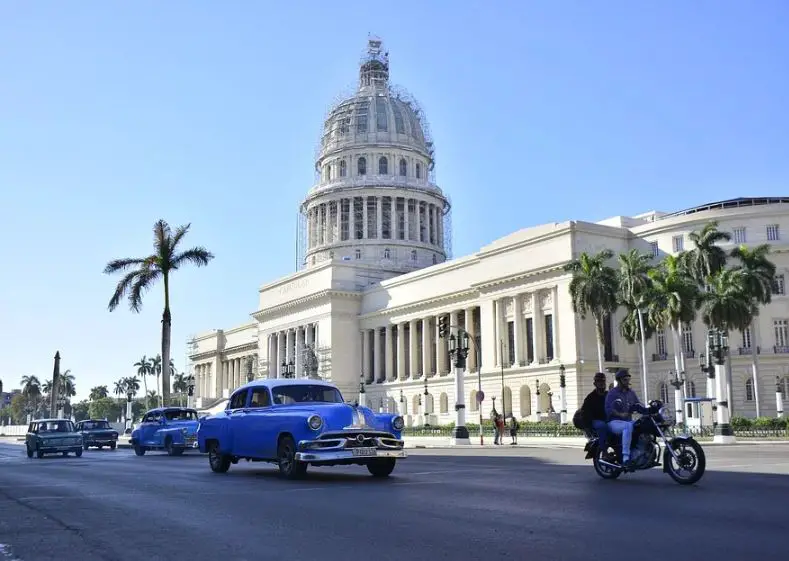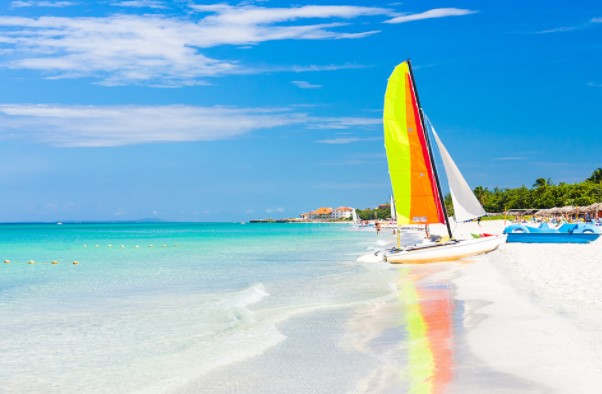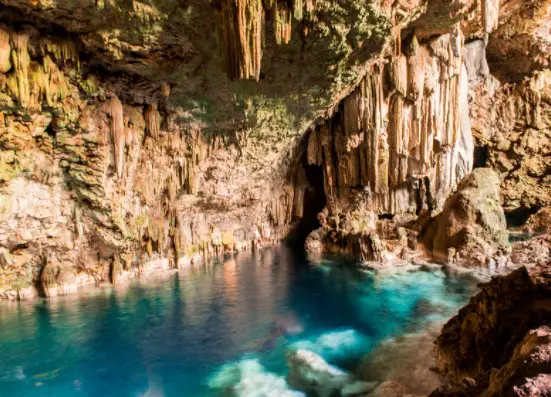Havana, Cuba: Interesting Facts,History, Things to do,Why to Visit
Post ByAdequate Travel
Located in the northern coast of Cuba, the breathtaking city of Havana is a sight to behold. The capital of Cuba, Havana is a bustling city full of vibrant culture, lively music, and picturesque streets. With an interesting history that dates back thousands of years, Havana is one of those must-see cities in the Caribbean for visitors. There’s so much to explore and discover in this stunning city, from its lively casinos and nightclubs to its natural wonders and historical landmarks. Discover the interesting facts about Cuba and what makes it unique, the diverse culture and history, the numerous activities you can do while visiting, and why Havana should definitely be on your list of places to visit.
Cuba is an island nation located in the Caribbean Sea, known for its rich history, vibrant culture, and political system. It gained independence from Spain in 1898 and went through various periods of political turmoil and economic hardship. In 1959, Fidel Castro led a socialist revolution, establishing a one-party communist government and bringing significant changes to the country.Under Castro's rule, Cuba implemented a centralized planned economy, with the government controlling most aspects of production and distribution. This resulted in limited economic opportunities and shortages of basic goods. Cuba also became isolated from the United States and many other Western countries due to its socialist ideology and close relationship with the Soviet Union during the Cold War.Despite economic challenges, Cuba has achieved notable successes in healthcare and education. The country's healthcare system is highly regarded internationally, with a focus on preventive medicine, and it has produced notable medical breakthroughs. Cuba also boasts a high literacy rate and a solid education system.In recent years, Cuba has been undergoing gradual economic reforms, allowing for the expansion of private businesses and foreign investment. These reforms aim to stimulate growth and improve living standards. Additionally, the government has relaxed travel restrictions, leading to an increase in tourism.Cuba remains a popular tourist destination due to its tropical climate, beautiful beaches, and rich cultural heritage. Visitors can experience the unique blend of African, Spanish, and Caribbean influences through music, dance, and cuisine. The country has also preserved its architectural legacy, with Havana's historic center being a UNESCO World Heritage site.However, Cuba still faces challenges such as limited internet access, an aging infrastructure, and restricted political freedoms. The recent change in leadership with Fidel Castro's brother, Raul Castro, handing over power to Miguel Díaz-Canel in 2018, has brought hopes for further economic and political reforms. Overall, Cuba continues to captivate the world with its complex history, resilient people, and colorful culture.Explore the popular places in cuba, and immerse yourself in its vibrant culture.
Interesting facts
1. Cuban Cigars:
Cuba is known worldwide for its high-quality cigars. The country's rich tobacco-growing tradition, favorable climate, and skilled craftsmanship contribute to the production of some of the finest cigars in the world. Cuban cigars are highly sought after by cigar enthusiasts and connoisseurs due to their distinct flavors and strong reputation. Brands like Cohiba, Montecristo, and Romeo y Julieta are favorites among cigar lovers.
2. Classic Cars:
Cuba is famous for its colorful collection of classic cars that can be seen on the streets of cities like Havana. Due to the US embargo on Cuba, the import of new cars has been restricted for decades, leading to the preservation of many vintage American cars from the 1950s and earlier. These classic cars have become an iconic symbol of Cuba's culture and tourism, attracting visitors from around the world.
3. Cuban Music and Dance:
Cuba has a vibrant music and dance scene, encompassing various genres such as salsa, son, rumba, mambo, and Afro-Cuban jazz. The country is known for its influential musicians, including legends like Buena Vista Social Club, Celia Cruz, and Compay Segundo. The Cuban salsa and rumba rhythms have gained popularity globally, with dance enthusiasts flocking to Cuba to learn from the best.
4. Healthcare and Education:
Cuba has achieved remarkable advancements in healthcare and education, despite being a developing country. The government places a strong emphasis on providing free education and healthcare for its citizens, resulting in high literacy rates and a well-regarded healthcare system. Cuban doctors are known for their expertise and are often sought after to assist in international medical missions.
5. Preservation of Natural Beauty:
Cuba boasts breathtaking natural landscapes, including pristine beaches, lush forests, and vibrant coral reefs. The country has made significant efforts in preserving its natural beauty by establishing national parks and protected areas. Examples include Viñales Valley, a UNESCO World Heritage Site known for its karst hills and tobacco fields, and the Jardines del Rey archipelago, home to some of the Caribbean's most stunning beaches and marine ecosystems.
From museums to parks,cuba tourist attractions offer something for everyone, making it a versatile destination for all type of tourists.History of Cuba
1. Indigenous people: Before the arrival of Christopher Columbus in 1492, the island of Cuba was inhabited by various indigenous tribes. These included the Taíno people, who built villages and practiced agriculture. They were later colonized and enslaved by the Spanish.
2. Spanish colonization: Cuba was colonized by the Spanish in the early 16th century. The Spanish brought African slaves to work in plantations, leading to a significant Afro-Cuban population. The Spanish Empire had control over Cuba for nearly four centuries, until the Spanish-American War in 1898.
3. Independence and the Republic: After the Spanish-American War, Cuba gained independence from Spain with the help of the United States. However, the U.S. maintained significant influence over Cuban affairs, leading to periods of political instability and authoritarian rule.
4. Cuban Revolution: The Cuban Revolution, led by Fidel Castro and Che Guevara, was a pivotal event in Cuban history. It began in 1953 and successfully overthrew the U.S.-backed dictator Fulgencio Batista in 1959. The revolution resulted in the establishment of a socialist state with Fidel Castro as the leader.
5. Cold War tensions: The Cuban Revolution and the subsequent alliance between Cuba and the Soviet Union led to increased Cold War tensions between the U.S. and Cuba. In 1961, the U.S. attempted to overthrow the Cuban government with the failed Bay of Pigs invasion. The Cuban Missile Crisis in 1962 further heightened the conflict.
6. Post-revolutionary period: Following the revolution, Cuba implemented various social and economic reforms, including nationalization of industries and land, as well as the establishment of a planned economy. The country faced economic challenges and trade embargoes imposed by the U.S., which affected its development.
7. Recent developments: In recent years, Cuba has undergone some changes. In 2014, the U.S. and Cuba began a process of normalizing diplomatic relations, leading to the reopening of embassies in both countries. However, there are still political and economic obstacles that both countries need to address.
Exploring the rich heritage of historical sites in cuba is a journey through time and culture.Famous Things of Cuba
1. Havana
Havana, the capital city of Cuba, is one of the most famous and iconic destinations in the country. It is known for its vibrant culture, historic architecture, and lively streets. The city's old town, known as Habana Vieja, is a UNESCO World Heritage site and is home to numerous notable landmarks, including the famous Malecón waterfront promenade, the Capitolio building, and the Plaza de la Catedral with its stunning Baroque Cathedral of Havana. Havana is also renowned for its lively music scene, classic American cars, and vibrant nightlife.
2. Varadero Beach
Varadero Beach is a world-renowned tourist destination in Cuba, located on the Hicacos Peninsula. With its pristine white sands and crystal-clear turquoise waters, Varadero is a paradise for beach lovers. It stretches over 20 kilometers and offers a range of water sports and activities, including snorkeling, scuba diving, and sailing. The beach is lined with luxury resorts, hotels, and restaurants, making it a popular choice for tourists seeking a relaxing and indulgent vacation.
3. Trinidad
Trinidad, a well-preserved colonial town, is another famous destination in Cuba. It is known for its cobblestone streets, colorful pastel buildings, and charming atmosphere. The town's historic center, a UNESCO World Heritage site, features beautiful colonial architecture, including the iconic Plaza Mayor and the Santisima Trinidad Church. Visitors can explore the Museum of the Fight Against Bandits or enjoy live music and dancing in the lively Casa de la Musica. Trinidad also offers easy access to the stunning natural beauty of the surrounding areas, such as the Topes de Collantes Natural Park.
4. Cuban Cigars
Cuban cigars are famous worldwide for their exceptional quality and craftsmanship. They are considered among the best cigars in the world. The tobacco used in Cuban cigars is carefully grown and hand-rolled by skilled artisans. The production process follows strict regulations to ensure that the cigars maintain their exceptional flavor and aroma. Visitors to Cuba can visit tobacco farms and cigar factories to learn about the fascinating process and even purchase authentic Cuban cigars as souvenirs.
5. Che Guevara
Che Guevara, a prominent figure in Cuban and Latin American history, has become an icon of rebellion and revolution worldwide. Born in Argentina, Guevara played a significant role in the Cuban Revolution alongside Fidel Castro. His image, immortalized in the famous photograph taken by Alberto Korda, can be seen on murals, t-shirts, and posters throughout Cuba. Visitors can explore the Che Guevara Memorial in Santa Clara, which houses his mausoleum and museum, dedicated to his life and revolutionary efforts.
These are just a few examples of the famous things in Cuba. The country is rich in history, culture, and natural beauty, offering visitors a diverse range of attractions and experiences.Discover some unique facts about cuba that will leave you amaze and intrigue.The Culture of Cuba
Cuba, located in the Caribbean, has a rich and vibrant culture that is influenced by its history, religion, and the various ethnic groups that have shaped its identity. Let's explore the key aspects of Cuban culture:
1. Music and Dance
Cuba is known as the birthplace of numerous musical genres, including salsa, son, rumba, and mambo. Music is deeply ingrained in Cuban culture and is often performed and enjoyed in everyday life. The traditional dance forms such as salsa and rumba also play a significant role. The infectious rhythms, lively beats, and expressive movements of Cuban music and dance reflect the passionate and energetic spirit of the Cuban people.
2. Cuisine
Cuban cuisine is a fusion of various influences, primarily Spanish, African, and Caribbean. It is known for its flavorful and hearty dishes, often featuring rice, beans, pork, plantains, and yucca. A traditional Cuban meal may include classics like ropa vieja (shredded beef), arroz con pollo (rice with chicken), and moros y cristianos (black beans and rice). The cuisine is also influenced by the availability of local ingredients such as seafood and tropical fruits.
3. Architecture
Cuba boasts a diverse architectural heritage that reflects its history and cultural blend. The country showcases stunning colonial architecture seen in its colorful Spanish colonial buildings and cobblestone streets found in cities like Havana and Trinidad. Additionally, Cuba is renowned for its mid-century modern architecture, exemplified by the iconic Hotel Habana Riviera and the University of Havana, designed by renowned architect Ricardo Porro.
4. Literature and Art
Cubans have a strong literary and artistic tradition. Many notable writers and poets have emerged from the country, including Jose Marti and Alejo Carpentier. Cuban literature often explores themes of identity, history, and social issues. Cuban art is diverse and encompasses various styles and mediums. The country is especially renowned for its visual arts scene, with famous artists like Wilfredo Lam and Amelia Pelaez gaining international recognition.
5. Afro-Cuban Influences
The African heritage plays a crucial role in Cuban culture, particularly in music, dance, and religious practices. Santeria, a syncretic religion combining elements of Roman Catholicism and West African Yoruba traditions, is widely practiced in Cuba. It involves rituals, ceremonies, and music dedicated to deities or orishas. Afro-Cuban cultural expressions are, therefore, deeply intertwined with the overall Cuban identity.
In conclusion, Cuban culture is a dynamic fusion of various influences, characterized by vibrant music, flavorful cuisine, mesmerizing architecture, renowned literature and art, as well as the rich and lasting impact of African traditions.Immerse yourself in the local culture by exploring cuba's top-rated tourist attractions.Cuisine of Cuba:
The cuisine of Cuba is a blend of Spanish, African, and Caribbean influences, resulting in a unique and delicious culinary tradition. It reflects the island's history as a melting pot of various cultures and its abundant natural resources.
Influences:
1. Spanish influence: Spanish colonization introduced ingredients and cooking techniques such as spices, rice, and olive oil. Traditional Spanish dishes like paella and roasted meats have become integral parts of Cuban cuisine.
2. African influence: The arrival of African slaves in Cuba brought vibrant flavors and cooking methods like marinating and slow cooking. African ingredients like plantains, yams, and okra are commonly used in Cuban dishes.
3. Caribbean influence: The proximity to other Caribbean islands has also influenced Cuban cuisine. It incorporates elements like tropical fruits, coconut milk, and seafood, creating a rich and diverse taste.
Key Ingredients:
1. Rice: Rice is a staple in Cuban cuisine and forms the base of many dishes, such as arroz con pollo (rice with chicken) and moros y cristianos (black beans and rice).
2. Beans: Black beans and red beans are commonly used in traditional Cuban dishes, either as a side or as the main ingredient. They are often cooked with spices, onions, and garlic.
3. Pork: Pork is a popular meat in Cuban cuisine and is used in various forms, including roasted, grilled, or in stews. A classic Cuban dish is lechon asado, which is a whole roasted pig marinated in citrus juices and spices.
4. Plantains: Plantains are a versatile ingredient in Cuban cooking. They can be boiled, fried, or mashed, and are used in dishes like tostones (fried plantain slices) and maduros (sweet plantains).
5. Seafood: With its coastal location, Cuba has a rich variety of seafood. Lobster, shrimp, and fish are commonly used in dishes like ceviche, seafood stews, and grilled seafood platters.
Traditional Dishes:
1. Ropa Vieja: Shredded beef stewed in tomatoes, onions, peppers, and garlic. It is often served with rice and beans.
2. Vaca Frita: Fried and marinated beef, typically served with rice, black beans, and plantains.
3. Moros y Cristianos: A rice and black beans dish cooked together, infused with spices, onions, and garlic.
4. Arroz con Pollo: Chicken and rice dish cooked with various spices, vegetables, and sometimes saffron.
5. Cuban Sandwich: A popular street food made with ham, roast pork, Swiss cheese, pickles, and mustard, pressed between Cuban bread.
6. Tostones: Fried green plantains, often served as a side or appetizer.
Cuban cuisine showcases the diverse cultural influences and flavors that have shaped the country's culinary traditions. It offers a tantalizing array of dishes featuring ingredients like rice, beans, pork, plantains, and seafood. From hearty stews to flavorful marinades, Cuban cuisine is known for its aromatic spices and vibrant taste.Discover unique facts about cuba, a destination filled with rich history and natural beauty.1. Explore Havana
Havana, the capital city of Cuba, is a vibrant and picturesque destination with a rich cultural history. Take a stroll along the Malecón, a seaside promenade, and admire the charming colonial architecture of Old Havana. Visit the Plaza de la Catedral, the main square of Old Havana, and marvel at the stunning baroque Cathedral of Havana. Don't miss the iconic El Capitolio building and the lively neighborhood of Vedado.
2. Visit Varadero Beach
Varadero Beach is one of Cuba's most famous and beautiful beaches. With its crystal-clear turquoise waters and powdery white sand, it is an idyllic spot for sunbathing, swimming, and enjoying water sports such as snorkeling and diving. Relax on the beach, indulge in delicious seafood at beachfront restaurants, or take a catamaran cruise to explore the surrounding cays.
3. Discover Trinidad
Trinidad, a UNESCO World Heritage site, is a well-preserved colonial town that offers a glimpse into Cuba's past. Wander through the cobblestone streets, visit the beautifully preserved mansions and palaces, and explore the local museums. Don't miss the Plaza Mayor, the heart of Trinidad, and climb the Tower of the Convento de San Francisco for panoramic views of the town.
4. Explore Viñales Valley
Viñales Valley is a picturesque region known for its tobacco fields and limestone karsts. Take a guided tour of a tobacco plantation to learn about the process of cigar production and sample locally produced cigars. Enjoy hiking or horseback riding through the valley, and visit the Mural de la Prehistoria, a massive prehistoric painting on a cliffside.
5. Experience Cuban Music and Dance
Cuba is famous for its vibrant music and dance scene. Enjoy live music performances at bars and clubs in Havana, where you can dance to traditional Cuban rhythms like salsa, son, and rumba. Visit the Buena Vista Social Club for an authentic Cuban music experience or catch a show at the renowned Tropicana Cabaret in Havana.
6. Visit the Cienfuegos
Cienfuegos, often called the "Pearl of the South," is a charming coastal city known for its French influence and stunning architecture. Explore the historic center, declared a UNESCO World Heritage site, and admire the neoclassical buildings and the beautiful Cienfuegos Cathedral. Take a walk along the Malecón promenade and visit the Palacio del Valle, a beautiful mansion with an exquisite blend of architectural styles.
7. Dive into Cuban History at the Museum of the Revolution
The Museum of the Revolution in Havana offers a fascinating insight into Cuba's revolutionary history. Housed in the former Presidential Palace, the museum showcases artifacts, photographs, and exhibits related to the Cuban Revolution. Learn about the life of Fidel Castro, Che Guevara, and other key figures in Cuba's history.
8. Explore the Colonial Charm of Camagüey
Camagüey is known for its well-preserved colonial architecture and winding streets. Explore the historic center, a UNESCO World Heritage site, and admire the elegant plazas, churches, and colorful buildings. Visit the Tinajón Park, where you can see traditional clay pots called "tinajones," which have become a symbol of the city.
These are just a few of the many things to do and see in Cuba. With its rich history, stunning natural landscapes, and vibrant culture, Cuba offers a diverse range of experiences to suit every traveler's interests.When planning your trip to cuba, be sure to include the best things to do in cuba, which encompass a wide range of cultural experiences.Climate of Cuba
Cuba experiences a tropical climate throughout the year, characterized by warm temperatures and high humidity. The country is located in the Caribbean region, which results in its climate being heavily influenced by the surrounding ocean currents and trade winds. The climate of Cuba can be categorized into two main seasons: the wet season and the dry season.Wet Season
The wet season in Cuba typically occurs between May and October. During this period, the country experiences frequent rainfall and higher humidity levels. The average monthly precipitation ranges from 50 to 200 millimeters in different regions of Cuba. The wet season is also associated with the occurrence of tropical storms and hurricanes, which can bring heavy rain and strong winds. These weather events are more likely to happen between June and November, with September being the peak month for hurricanes.Dry Season
The dry season in Cuba lasts from November to April. This period is characterized by lower humidity levels and significantly less rainfall compared to the wet season. The average monthly precipitation during the dry season ranges from 10 to 50 millimeters in various parts of Cuba. The dry season is known for its pleasant weather, with warm days and cool nights. It is the peak tourist season in Cuba, as many visitors prefer to explore the country during this time when the weather tends to be more predictable and enjoyable.Regional Variations
Cuba's climate exhibits some regional variations due to its diverse topography and geographical features. The eastern part of the country, including the provinces of Holguín and Santiago de Cuba, generally experiences more rainfall than other regions. The central and western regions, such as Havana and Varadero, receive relatively less rainfall and have a slightly drier climate. However, it is important to note that these variations are relatively minor, and Cuba, as a whole, is characterized by its tropical climate throughout the year. Overall, the climate of Cuba can be described as tropical, with warm temperatures and high humidity. The wet season brings frequent rainfall and the possibility of tropical storms and hurricanes, while the dry season offers pleasant weather with lower humidity and less rainfall. Understanding the climate of Cuba is crucial for planning a visit or any outdoor activities in the country.Discover unique facts about cuba, a destination filled with rich history and natural beauty.Popular Activities in Cuba
1. Explore Old Havana
Old Havana, also known as Habana Vieja, is a UNESCO World Heritage Site and one of the most iconic areas in Cuba. Take a stroll through its cobblestone streets and admire the well-preserved Spanish colonial architecture. Visit notable landmarks such as the Plaza de la Catedral, El Morro Castle, and the Plaza de Armas.
2. Relax on Varadero Beach
Varadero is a popular beach resort town located on the Hicacos Peninsula. Its stunning white sand beaches and crystal-clear turquoise waters make it an ideal spot for sunbathing, swimming, and water sports. Enjoy a leisurely day under the Caribbean sun, or engage in activities like snorkeling, jet skiing, or catamaran cruises.
3. Visit the Valley of Viñales
The Viñales Valley is a picturesque region known for its breathtaking landscapes and tobacco plantations. Take a guided tour to explore the traditional Cuban countryside, visit tobacco farms, and witness the unique karst formations known as mogotes. You can also hike or horseback ride through the valley to fully immerse yourself in its natural beauty.
4. Salsa Dancing in Trinidad
Trinidad, a UNESCO World Heritage Site, is renowned for its vibrant music and dance culture. Join a salsa class or visit local clubs and dance the night away to the infectious beats of traditional Cuban music. Immerse yourself in the vivacious atmosphere and let the rhythm of salsa take over.
5. Scuba Diving in the Gardens of the Queen
The Gardens of the Queen is a marine reserve located off the southern coast of Cuba. It is considered one of the best diving spots in the Caribbean, offering vibrant coral reefs, a wide variety of marine life, and opportunities to encounter endangered species such as sharks, sea turtles, and crocodiles. Dive into the crystal-clear waters and explore the underwater wonders of this pristine ecosystem.
Plan your trip with a list of the best things to do in cuba, catering to all interests.Nightlife in Cuba
What is the nightlife like in Cuba?
Cuba is known for its vibrant and lively nightlife scene. The country offers a variety of venues where locals and tourists alike can enjoy music, dancing, and socializing. From lively bars and clubs to live music venues and salsa dancing halls, there is something for everyone to enjoy in Cuba's nightclubs.Bars and Clubs
- El Floridita: This historic bar in Havana is famous for its daiquiris and was a favorite spot of renowned writer Ernest Hemingway.
- Fabrica de Arte Cubano: Located in a former olive oil factory in Havana, this unique venue combines art exhibitions, live music, and DJ sets, creating an eclectic and vibrant atmosphere.
- Club Tropicana: Known for its cabaret shows, this open-air venue in Havana features colorful costumes, live music, and energetic dancing.
Live Music Venues
- Casa de la Musica: These popular venues can be found in various cities across Cuba and showcase live bands playing salsa, son, and other traditional Cuban music.
- La Zorra y El Cuervo: This famous jazz club in Havana offers nightly performances by both local and international jazz musicians.
- Casa de la Trova: Located in Santiago de Cuba, this venue is dedicated to promoting traditional Cuban music genres such as trova and son.
Salsa Dancing Halls
- 1830: Situated in Havana, this beautiful dance hall hosts nightly salsa dancing sessions with live bands and skilled dancers.
- Casa de la Musica de Miramar: This expansive venue in Havana offers salsa dancing lessons during the day, followed by lively dance parties at night.
- El Diablo Tun Tun: Located in Santiago de Cuba, this salsa club attracts locals and tourists alike with its authentic ambiance and live music performances.
In conclusion, Cuba offers a diverse and vibrant nightlife scene with a range of options for music, dancing, and socializing. Whether it's enjoying a classic daiquiri at El Floridita, dancing to live salsa music at Casa de la Musica, or experiencing a cabaret show at Club Tropicana, Cuba's nightlife has something for everyone to enjoy.Discover the untold stories behind cuba unique facts, and historical treasures.Reasons to Visit Cuba
1. Rich History and Culture
Cuba is known for its fascinating history and vibrant culture. With its colonial architecture, vintage cars, and classic music, a visit to Cuba feels like stepping back in time. From the colorful streets of Havana to the historical sites of Trinidad and Santiago de Cuba, the country is a treasure trove of cultural experiences.
2. Beautiful Beaches
Cuba is home to some of the most beautiful beaches in the Caribbean. Varadero, Cayo Coco, and Guardalavaca are just a few examples of pristine white sandy beaches with crystal-clear turquoise waters. Whether you are looking to relax, swim, snorkel, or enjoy water sports, Cuba's beaches offer a perfect escape.
3. UNESCO World Heritage Sites
Cuba boasts nine UNESCO World Heritage Sites, including Old Havana, Viñales Valley, and Trinidad. These sites are recognized for their outstanding cultural, historical, or natural value, and visiting them provides an opportunity to explore the country's rich heritage and architectural wonders.
4. Salsa Dancing and Music
Music and dance are integral parts of Cuban culture, and the country is renowned for its salsa music and dancing. From lively salsa clubs in Havana to spontaneous street performances, you can immerse yourself in the vibrant rhythms and movements that make Cuba a paradise for music and dance lovers.
5. Eco-tourism and Natural Beauty
Cuba is known for its stunning natural landscapes and biodiversity. You can explore lush national parks such as Topes de Collantes and Alejandro de Humboldt, hike through dramatic mountain ranges, or discover the unique flora and fauna of the Zapata Peninsula. Cuba offers numerous eco-tourism opportunities for nature enthusiasts.
Examples in HTML:
<h5>Reasons to Visit Cuba</h5>
<p>1. Rich History and Culture</p>
<p>Cuba is known for its fascinating history and vibrant culture. With its colonial architecture, vintage cars, and classic music, a visit to Cuba feels like stepping back in time. From the colorful streets of Havana to the historical sites of Trinidad and Santiago de Cuba, the country is a treasure trove of cultural experiences.</p>
<p>2. Beautiful Beaches</p>
<p>Cuba is home to some of the most beautiful beaches in the Caribbean. Varadero, Cayo Coco, and Guardalavaca are just a few examples of pristine white sandy beaches with crystal-clear turquoise waters. Whether you are looking to relax, swim, snorkel, or enjoy water sports, Cuba's beaches offer a perfect escape.</p>
<p>3. UNESCO World Heritage Sites</p>
<p>Cuba boasts nine UNESCO World Heritage Sites, including Old Havana, Viñales Valley, and Trinidad. These sites are recognized for their outstanding cultural, historical, or natural value, and visiting them provides an opportunity to explore the country's rich heritage and architectural wonders.</p>
<p>4. Salsa Dancing and Music</p>
<p>Music and dance are integral parts of Cuban culture, and the country is renowned for its salsa music and dancing. From lively salsa clubs in Havana to spontaneous street performances, you can immerse yourself in the vibrant rhythms and movements that make Cuba a paradise for music and dance lovers.</p>
<p>5. Eco-tourism and Natural Beauty</p>
<p>Cuba is known for its stunning natural landscapes and biodiversity. You can explore lush national parks such as Topes de Collantes and Alejandro de Humboldt, hike through dramatic mountain ranges, or discover the unique flora and fauna of the Zapata Peninsula. Cuba offers numerous eco-tourism opportunities for nature enthusiasts.</p>
Whether you're a history buff or an adventure seeker, cuba has an attraction for you. So, don't miss the chance to visit popular places in cubaNumber of Days Required to Visit Cuba
In order to truly experience the beauty and diversity of Cuba, it is recommended to spend a significant amount of time exploring the country. The number of days required to visit Cuba can vary depending on several factors such as the places you want to visit, the activities you want to engage in, and your personal preferences.
Exploring the Answer in Detail
1. Havana: Start your trip in the vibrant capital city of Havana. To fully immerse yourself in the history, culture, and architecture, plan to spend at least 2-3 days here. Explore the colorful streets of Old Havana, visit the famous Malecon, and soak in the local atmosphere.
2. Varadero: If you want to relax on pristine white sandy beaches, head to Varadero. Spend around 2-3 days enjoying the sun, sea, and sand. Varadero is also known for its resorts, so make sure to check out the all-inclusive options if that's your preference.
3. Viñales: To experience Cuba's stunning countryside and tobacco plantations, a visit to Viñales is a must. Allow 2-3 days to explore this beautiful region, take a horseback ride through the lush landscapes, and learn about the cigar-making process.
4. Trinidad: Step back in time and visit the charming town of Trinidad, a UNESCO World Heritage site. Spend around 2-3 days wandering the cobblestone streets, visiting the colonial-era buildings, and enjoying the lively music scene.
5. Santiago de Cuba: If you want to delve into Cuba's Afro-Caribbean culture, head to Santiago de Cuba. Plan to spend around 2-3 days exploring the vibrant music scene, visiting historical sites, and immersing yourself in the city's unique atmosphere.
6. Other destinations: Cuba offers many other interesting destinations such as Cienfuegos, Camagüey, and Holguín. Each of these places deserves at least a day or two of exploration, therefore adding more days to your itinerary.
In total, a trip to Cuba can range from a minimum of 7-10 days to several weeks or even longer, depending on the depth of your exploration. It's important to consider that Cuba is a relatively large island with diverse attractions, so planning your time accordingly will ensure you can make the most out of your visit.
Discover the untold stories behind cuba unique facts, and historical treasures.Significance of Cuba
Cuba holds great significance due to its history, culture, and politics.
1. Historical Significance
Cuba's history is rich and diverse, with notable events that have shaped the country's identity. For instance:
- Cuban Revolution: The Cuban Revolution led by Fidel Castro in 1959 resulted in the establishment of a communist government and significantly altered Cuba's political landscape.- Bay of Pigs invasion: The failed US-backed invasion in 1961, aimed at overthrowing Castro's regime, became a defining moment in the cold war era.- Cuban Missile Crisis: In 1962, Cuba became the center of a tense confrontation between the United States and the Soviet Union, as the presence of Soviet nuclear missiles on the island brought the world to the brink of nuclear war.2. Cultural Significance
Cuban culture is renowned worldwide for its vibrant music, dance, art, and literature:
- Music and dance: Cuba is birthplace to various musical styles like salsa, rumba, and son, making it an important contributor to Latin American and Caribbean music. Popular Cuban dances, such as salsa, mambo, and cha-cha-cha, have gained global popularity.- Literature: Cuban authors have made significant contributions to world literature. Writers like Jose Marti and Alejo Carpentier have explored themes of national identity and cultural heritage.- Visual arts: Cuban artists have produced notable works in visual arts, influenced by Afro-Cuban and European styles, showcasing their unique perspective.3. Political Significance
Cuba's political landscape has garnered international attention and controversy:
- Communist government: Since the Cuban Revolution, Cuba has been governed by a one-party communist system, making it one of the few remaining socialist states in the world.- US-Cuba relations: Cuba's geopolitical position, just 90 miles south of Florida, has led to a tumultuous relationship with the United States. Decades of trade embargoes and political tension between the two nations have shaped Cuba's political significance on the world stage.- Global influence: Despite its small size, Cuba has played a significant role in global politics, particularly in Latin America. Cuba has supported and influenced socialist or leftist movements in neighboring countries, fostering alliances and contributing to regional dynamics.From hidden gems to iconic landmarks, cuba has something for every traveler's taste.FAQ's of Cuba
1. What is the official language of Cuba?
The official language of Cuba is Spanish. It is spoken by the majority of the population and used in all official and business matters. Spanish is taught in schools and used in all forms of media and communication.
Example:
In Cuba, you will hear Spanish being spoken everywhere - in the streets, shops, and public transport. As a traveler, it can be helpful to learn some basic Spanish phrases to navigate and communicate with the locals.
2. What is the currency of Cuba?
The currency of Cuba is the Cuban peso (CUP). There are two types of pesos in circulation - the Cuban convertible peso (CUC) and the Cuban peso moneda nacional (CUP). The CUC is primarily used by tourists for transactions involving hotels, restaurants, and some tourist attractions. The CUP is used for local purchases and services.
Example:
If you are a tourist visiting Cuba, you will need to exchange your foreign currency for Cuban convertible pesos (CUC) to make most of your purchases. It is advisable to carry some cash, as credit cards may not be widely accepted in smaller establishments.
3. Is it safe to travel to Cuba?
Cuba is generally considered a safe country to travel to. The Cuban government places a strong emphasis on protecting tourists and maintaining a safe environment. Crimes such as theft and violent incidents against tourists are relatively rare. However, like any travel destination, it is always important to take precautions and be aware of your surroundings.
Example:
Cuba has a relatively low crime rate compared to many other countries in the region. However, it is still recommended to take typical safety precautions such as avoiding displaying wealth, keeping an eye on your belongings, and staying in well-lit and populated areas, especially at night.
4. What are some popular tourist attractions in Cuba?
Cuba is known for its rich cultural heritage, stunning beaches, vibrant music scene, and historical landmarks. Some popular tourist attractions in Cuba include:
Example:
Santiago de Cuba
Located on the southeastern coast of the island, Santiago de Cuba is the second-largest city in Cuba and is known for its Afro-Cuban traditions, lively music scene, and historical sites.
Varadero
Varadero is a popular beach resort town located on the Hicacos Peninsula. It boasts pristine white sandy beaches and crystal-clear turquoise waters, attracting tourists for sunbathing, water sports, and relaxation.
Havana
The capital city of Cuba, Havana, is a UNESCO World Heritage Site and offers a mix of colonial architecture, vintage cars, vibrant music, and cultural experiences. Visitors can explore the famous Malecon promenade, Old Havana, and enjoy Cuban cigars and rum in local bars.
These are just a few examples of the frequently asked questions regarding Cuba. Each answer provides detailed information and is presented with appropriate heading tags in HTML (